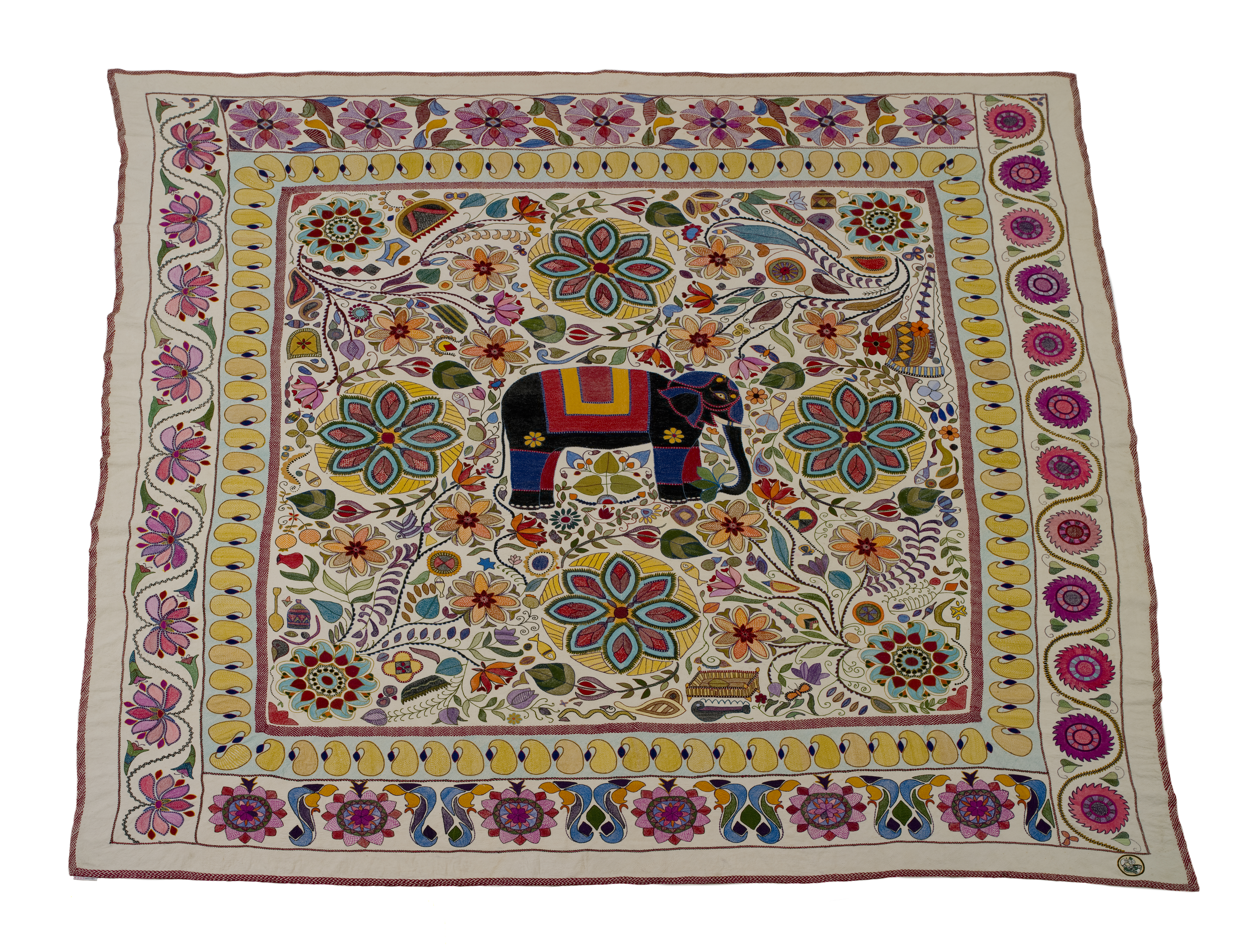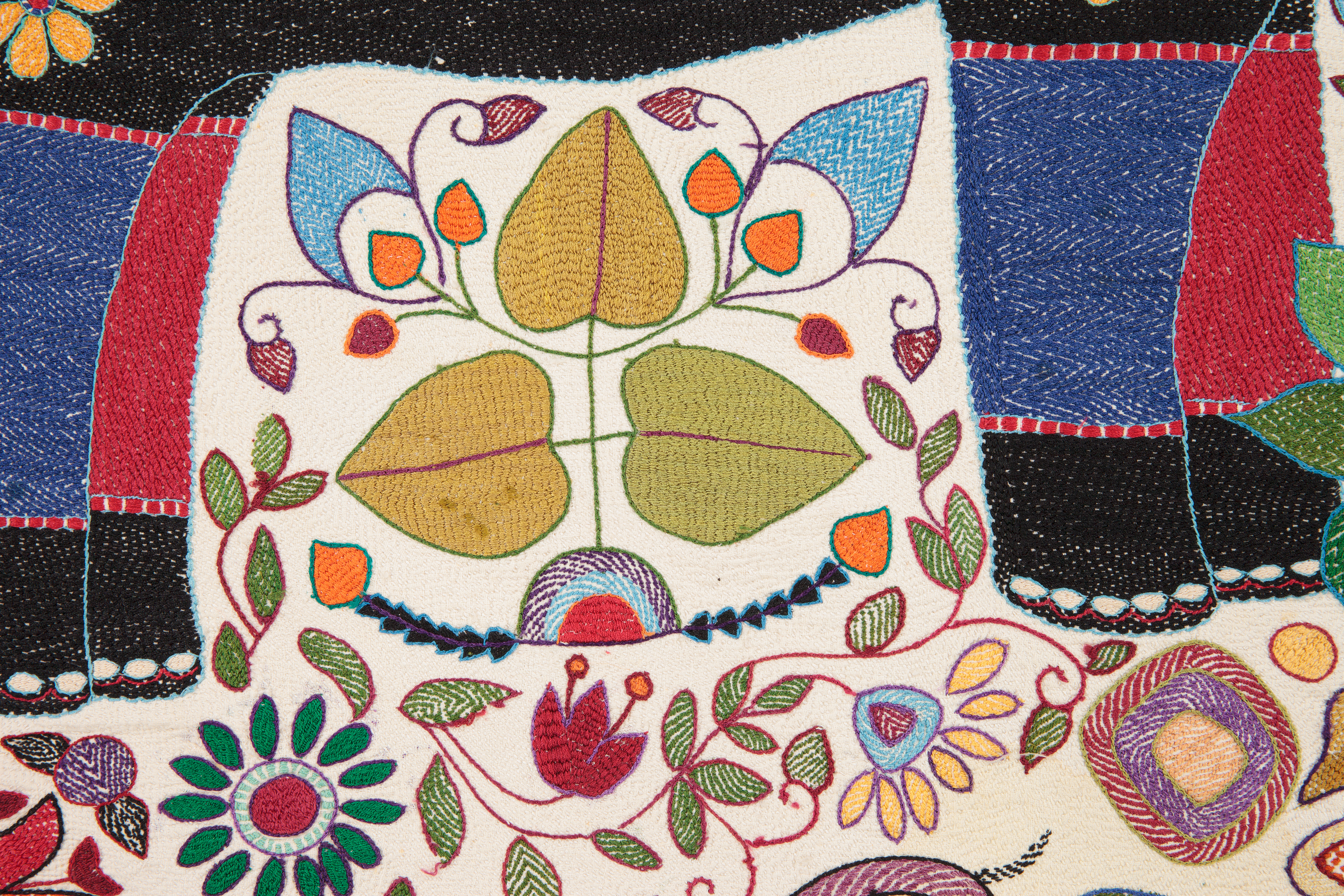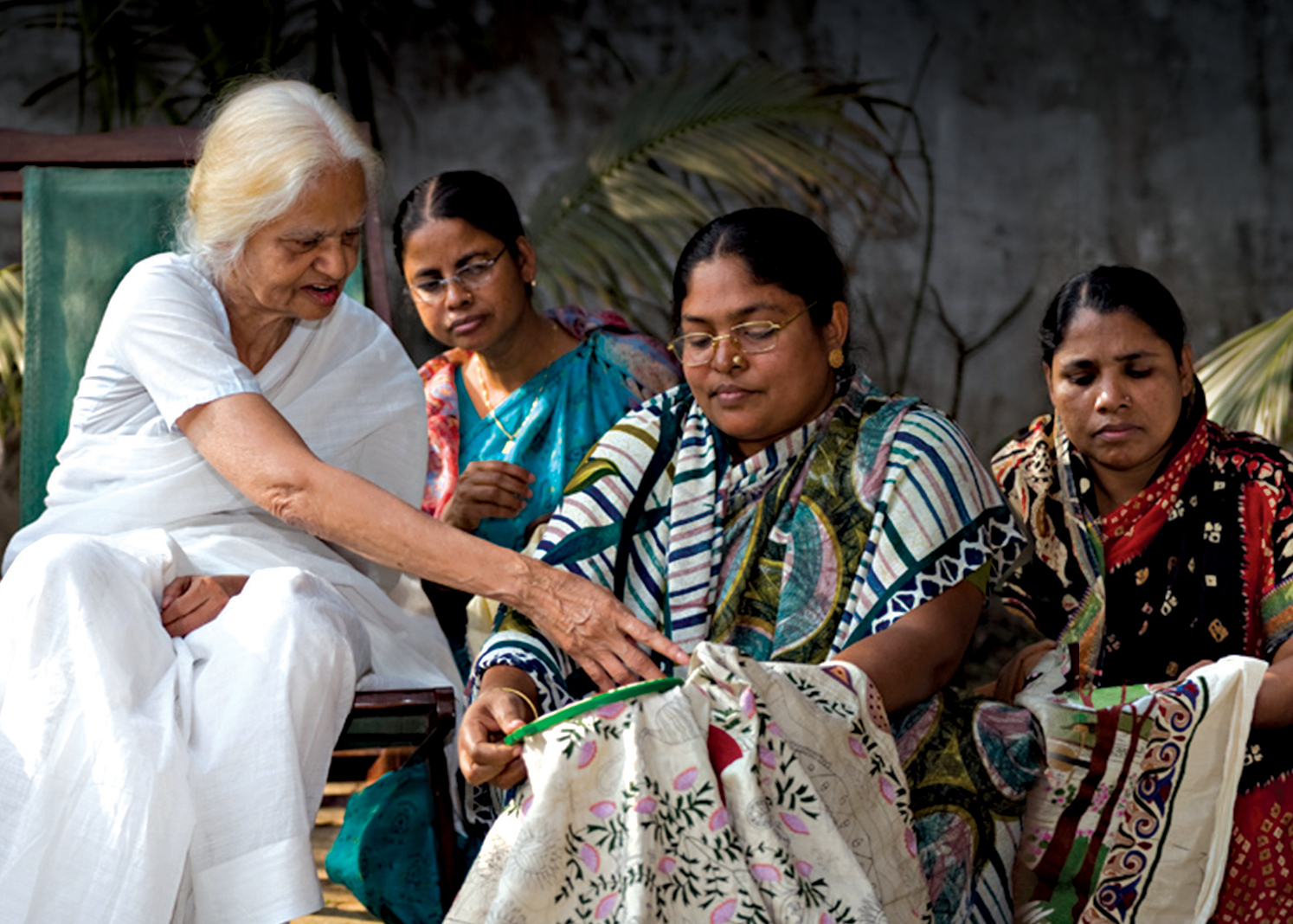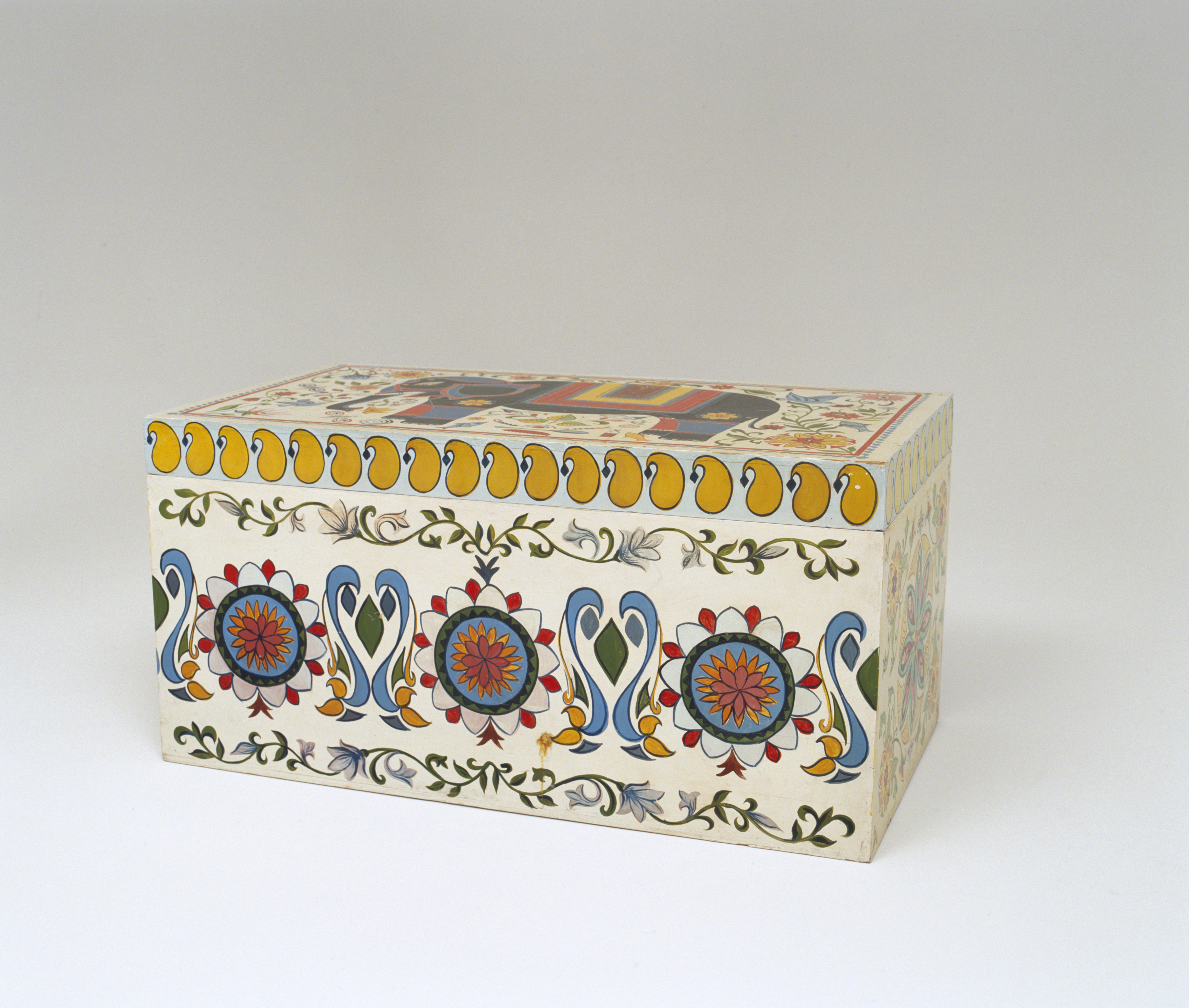
How many hands does it take to create a kantha tapestry like this? In this instance, it was the work of eight women embroidering every day for one year. Threading not only a story of traditional motifs, but also the international recognition of an ancient craft and women’s socio-economic emancipation in Bangladesh and West Bengal.
Kantha work, an embroidery technique using running stitch, is a centuries-old tradition from the Bengal region. It was utilised to produce functional household items by layering old saris and dhotis (garments) on top of one another, covering them with handwoven cotton and embroidering through all the layers with geometric and figurative designs. This contemporary example is representative of a revival and transformation of the craft into wall hanging art by Surayia Rahman.

A self-taught artist, Surayia Rahman (1932-2018) spent many years producing oil paintings as well as designing decorative pieces, dolls and stationery before focussing her artistic practice towards kantha. Kantha making in the home had become uncommon by 1925 and the practice lay dormant for nearly half a century.
It was after the Bangladesh Liberation War in 1971 that kantha work experienced a revival as a commercial activity to support women in destitution. During this time, Rahman began to imagine what her folk designs and stories would look like on cloth and what possibilities there might be for hanging kantha on a wall like a painting, ‘envisioning kantha as some of the finest tapestries in the world’. The style came to be known as ‘kantha tapestry’ and her vision to refine the domestic craft has since helped hundreds of impoverished women generate a livelihood.
In March 1982, Surayia Rahman and Maureen Berlin, a Canadian expatriate living in Dhaka, set up the Skill Development for Underprivileged Women (SDUW) program. Rahman provided the designs, selected colour combinations and supervised the production.


As well as generating income for communities, the project has ensured the preservation of traditional skills. The figurative designs used in this tapestry are all traditional kantha motifs. These include birds, flowers (e.g. the lotus and the sunflower), trees and animals. If you take a closer look, you can also find a bed, a snake, a comb, a babys cradle, fish, butterflies, a loti or water pot, a fan, parrots and caterpillars – all of which are traditional motifs.

To learn more of Surayia Rahman’s inspiring story, ‘Threads’ is a thought-provoking short film documentary about the women behind the needlework. In the words of Rahman, ‘Art is necessary for every corner of the world. Art is love.’
Rahman’s kantha tapestry is on display on Level 2 of the Powerhouse Museum until December 2019.
Written by Vanessa Thorne, Assistant Curator
September 2019



I am impressed with Surayia’s Rahman’s Kantha work & would like to learn about Kantha Work. Where can I find sources or teachers to learn about that special stitch. Appreciate your reply. Many thanks.
Hi Saroj,
I spoke with Curator Vanessa Thorne who wrote this post, and she’s provided the following information:
Thank you for your interest in this collection object – it’s a beautiful style of embroidery and a great story. Here are some links to an article/some books that describe kantha work in more detail:
https://digitalcommons.unl.edu/tsaconf/886/
https://books.google.com.au/books/about/The_Art_of_Kantha_Embroidery.html?id=VZ_YAAAAMAAJ&redir_esc=y
https://www.amazon.in/Woven-Air-Muslin-Tradition-Bangladesh/dp/0854880755
I hope this helps!
Sarah Reeves, MAAS
I HAVE A BEAUTIFUL PIECE CALLED TALE OF TWO VILLAGES.. IWOULD LIKE TO KNOW ITS VALUE IN THE ART WORLD
Thank you for your message. Due to the high volume of object-related enquiries and requests the Museum receives, unfortunately we do not have the resources to provide valuations for privately held objects. You be able to an estimate of the item’s value via online auction houses or marketplaces.
Best wishes, Sarah Reeves, MAAS